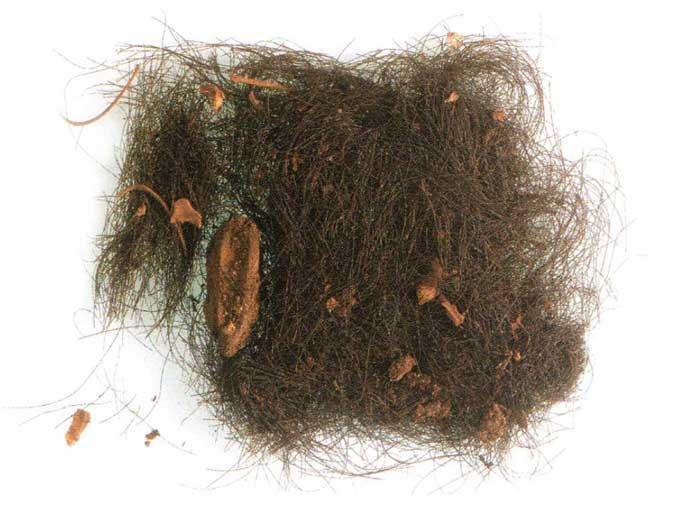BARCELONA, Spain – New research published last week suggests that Bronze-age Europeans on Spain’s Balearic Island of Minorca were using hallucinogenic substances. The researchers noted that there has been a long-standing tradition of human consumption of plants that have psychoactive or medicinal properties, but that this research is the first to provide direct evidence of such consumption said the team of archeologists.
About 28 years ago, two speleologists on the Mediterranean Island of Minorca made an extraordinary discovery: a cave system inside a 300 ft deep gorge called the Algendar ravine that held over 200 intact generational graves from the Bronze Age. They dated to between 1,600 BCE to 800 BCE. The cave is known as Es Càrritx, located in the southwestern part of the island between the towns of Ferreries and Serpentona.

The Es Càrritx cave on the island of Menorca [Courtesy ASOME- Universitat Autònoma de Barcelona]
The Balearic Islands were likely settled sometime around the second half of the third millennium BCE, during the Late Copper/Early Bronze Age. About 4,000 years ago, islanders began creating cairns, megaliths, and other monumental stone structures that were used for funerary purposes as well as boat-shaped ‘houses’ called navetes.
The researchers noted that “mind-altering substances are usually invisible in the archaeological record, their presence used to be inferred from indirect evidence, such as the typology and function of certain artefacts possibly related to their preparation or consumption.” In other words, archaeologists infer the ancient use of drugs and medications based on nearby paraphernalia from which they could extract evidence.
But the cave of Es Càrritx had something else: sealed tubes some of which contained strands of dyed human hair. The tubes were described as a “highly sophisticated piece of Prehistoric woodcraft” made of antler or wood, but the hair was intact and colored with a red pigment. The hair was from the deceased that had been prepared and then carefully preserved in the containers. The preparation was apparently part of a funerary ritual as the containers with the preserved and dyed hair were left near the deceased.

Human hair strands found in containers at Es Càrritx with some bone attached [Photo P. Witte – via Nature]
The presence of the hair made it possible to search for direct evidence of the use of plant drugs. Elisa Guerra-Doce, from the University of Valladolid in Spain, and her research colleagues examined the hair samples and found scopolamine, ephedrine, and atropine. Atropine and scopolamine are naturally found in the nightshade plant family and can induce hallucinations and altered sensory perception whereas ephedrine is a stimulant. Like caffeine, ephedrine produces alertness and excitement. Nightshades species are common throughout the Mediterranean and ephedrine is found in pines.
With confirmed direct evidence of plant drug use, the researchers have hypothesized that “The powerful mental and behavioral effects of these plants have made them indispensable ingredients in the botanical preparations used by shamans worldwide in rituals for divination, prophecy, and ecstasy.”
Nightshade and members of the Solanaceae family like mandrake, jimsonweed, and henbane have a “long history of use as medicines, poisons, and intoxicants, but they have achieved their most notorious reputation in association with European witchcraft during the Middle Ages/Early Modern period. Allegedly, witches smeared themselves with certain unguents to help them fly to demonic Sabbaths (hence their name of flying ointments) or be transformed into animals, according to some testimonies.” Plants like joint pine and shrubby horsetail would contain ephedra.
But the researchers also noted that it is uncertain whether individuals had hallucinatory experiences with these substances and that would have been millennia after the current findings from Es Càrritx.
The archeologists said that “the psychoactive substances detected in this study are not suitable for alleviating the pain.,” noting that there was evidence the individuals had suffered from abscesses and cavities as well as joint disease and pain. The use of these substances must have been for other purposes and require specialized knowledge.
The type of expertise was usually held by shamans. “This knowledge was typically possessed by shamans, who were capable of controlling the side-effects of the plant drugs through an ecstasy that made diagnosis or divination possible.”
Amy Blackthorn, herbalist and author of Blackthorn’s Botanical Wellness found the new evidence intriguing and said “As the plants spoke to these shamans, many varieties of plants produced various effects from disassociation, racing heartbeat or/and increase in tactile sensations. These biological effects were then interpreted by the logical portion of the brain.”
She added that these plants and their derivatives are now part of modern medicine. “While doses of the key tropane alkaloids scopolamine, hyoscyamine, and atropine from henbane, datura, and other plants, have been utilized by shamans, many of the plants we consume on a daily basis contain mind-altering chemicals in various amounts, including tomatoes, peppers, potatoes, chocolate, black pepper and more,” she said.
“While it is important to respect the potent constituents of poisonous plants, the contributions of these plants to medicine cannot be underestimated. Currently science is studying the synthesis of tropane alkaloids, in order to build resilience in medical supply chains for tropane alkaloids by synthesizing scopolamine, hyoscyamine, and atropine from yeast in order to treat nerve agent exposure, Parkinson’s, and other nerve-related disorders that are treated with these compounds.”
The researchers added that there is, in fact, evidence of shamanic ceremonies inside a nearby cave. They found olive wood carvings one of which depicted a man’s head while another was an anthropomorphic figure with stag antlers which even the researchers commented could be a “Prehistoric precedent of the later Celtic god Cernunnos.
The Wild Hunt is not responsible for links to external content.
To join a conversation on this post:
Visit our The Wild Hunt subreddit! Point your favorite browser to https://www.reddit.com/r/The_Wild_Hunt_News/, then click “JOIN”. Make sure to click the bell, too, to be notified of new articles posted to our subreddit.